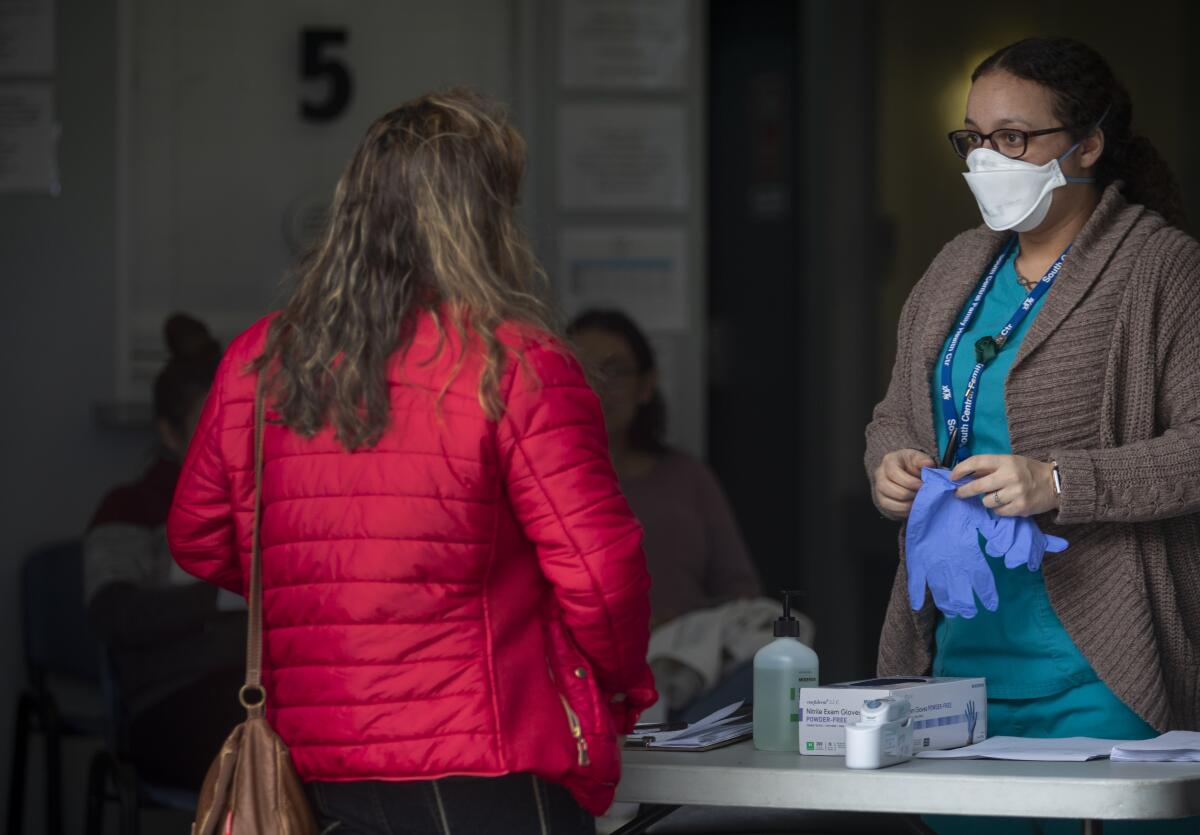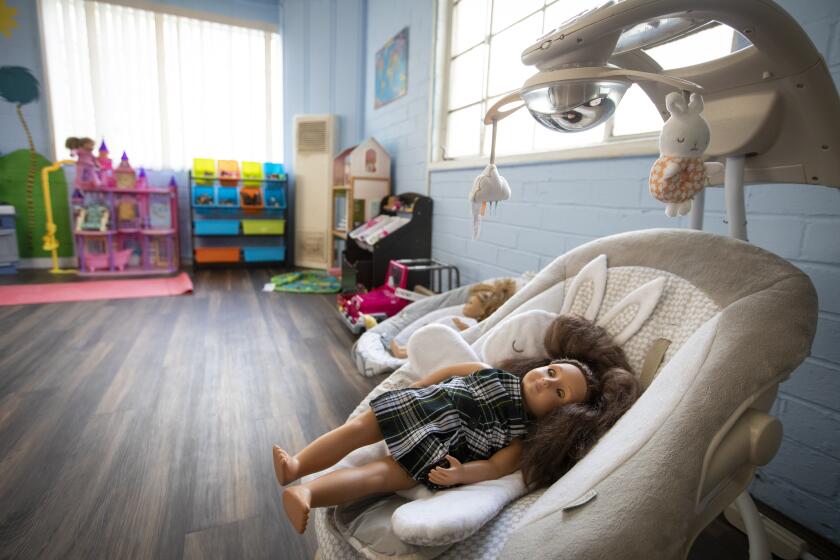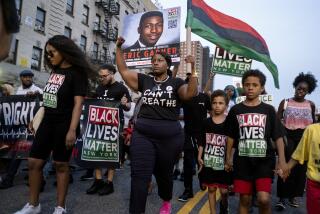Domestic violence rose during lockdown — and injuries are dramatically more severe, study finds

- Share via
The toll of COVID-19 does not always show up on a radiologist’s screen as blighted lungs. These doctors who peer beneath a patient’s skin with the help of CT or MRI scans are increasingly seeing evidence of physical abuse by those patients’ domestic partners as a consequence of the months of stay-at-home orders, job loss and escalating family stress that the pandemic has wrought.
On the high-tech images they order, radiologists and their physician colleagues in hospital emergency departments are seeing fractured bones and bruised and punctured organs. The inquiries that result often bring forth the closely held secret of an abusive partner.
A new study found that, as the tightest restrictions on nonessential activities began to lift in Massachusetts, physicians at a large hospital in Boston saw a near-doubling of the proportion of domestic abuse cases that resulted in physical injury in comparison with previous years. The injuries were also dramatically more severe, prompting concerns that victims had delayed seeking care even as the violence against them escalated.
Experts on intimate partner violence have feared that such abuse would increase during the COVID-19 pandemic, despite the fact that fewer victims appeared to be coming forward for fear of being infected in a clinic, shelter or hospital emergency department.
In April, United Nations chief António Guterres called for measures to counter what he called a “horrifying global surge in domestic violence” linked to the pandemic and directed at women and girls. And a study in May of domestic abuse calls to police in 14 metropolitan areas around the U.S. found the pandemic and accompanying public health response had led to a 10.2% increase in such calls.
The new research finds evidence that physical abuse has both increased and escalated — even as the numbers of victims coming forward has decreased.
Researchers at Brigham and Women’s Hospital in Boston identified 62 adults who sought help for physical and nonphysical abuse by an intimate partner between March 11 and May 3. That was far fewer than the numbers who came forward for help and/or treatment during the same period in 2019 (104 people), 2018 (106) and 2017 (146).
But the proportion of men and women whose abuse was physical — rather than verbal or emotional — was 80% higher in 2020 than in all three earlier years put together. And the physical abuse was much more severe.
The new research was published in the journal Radiology.
The more people see wearing face masks and practicing social distancing as ways to protect the health of others, the more likely they are to comply, research shows.
The researchers categorized the patients’ injuries by their severity, distinguishing superficial injuries such as bruises and black eyes from deep injuries resulting from strangulation, burns, knives, guns and other objects that can damage internal organs.
In the previous three years, the Boston hospital saw a total of 16 “deep” injuries caused by intimate partner violence. In 2020, however, the number of deep injuries was 28.
The results suggest that “victims may be so fearful of COVID-19 that they aren’t reaching us until the abuse is severe,” said Dr. Bharti Khurana, a radiologist at Brigham and Women’s Hospital who teaches at Harvard Medical School.
“We know that high-risk physical abuse and severe physical injuries are highly associated with homicide,” Khurana said. However overwhelmed physicians have been by the pandemic, they should be on the lookout for evidence of domestic abuse, she added.
Study coauthor Dr. Babina Gosangi, a radiologist who teaches at Yale, said the location of the severe injuries tended to be less evident to the casual observer. The victims whose injuries were considered deep tended to have been punched, kicked or hit repeatedly in the abdomen and chest rather than in or around the face.
While all of the patients in the study acknowledged that their injuries were at the hands of a fellow householder, the damage was not as readily identifiable as domestic abuse, unlike the broken wrists and arms (a typical defensive injury) or broken facial bones or bruises that are more common in cases of intimate partner violence.
The study period encompassed an intense period of COVID-19-related restrictions for the Boston area. Schools closed March 12, and by March 24, Massachusetts Gov. Charlie Baker had called for an emergency lockdown barring all but essential activities. The peak of COVID-19 cases came in late April, and by the study’s end on May 3, a low level of activity across the region was beginning to resume.
The researchers noted that the ethnic breakdown of abuse victims was different during the pandemic than it had been in previous years. Roughly two-thirds of those seeking care or treatment in 2020 were white. In the previous years, white people made up 26% of such cases.
Khurana said that in ordinary times, intimate partner abuse is almost certainly vastly undercounted. In the midst of a pandemic, when victims are holed up for extended periods of time with their abusers and have few other social contacts, that undercount is likely to be even more pronounced.
“This is the tip of the iceberg,” said Khurana, who has worked to help other radiologists identify victims of intimate partner violence. “We saw the worst 26 physical violence victims. That is very small compared to what is happening.”
By the time we emerge from the COVID-19 pandemic, preventable violence will have scarred the lives — and even cost the lives — of children in the U.S.
In children, the toll — and its undercount — could be even more severe. Most cases of physical abuse are identified by teachers and school administrators, who have not seen most students in months. Most cases of physical injury at the hands of a caregiver are therefore unlikely to be identified unless they are serious enough to prompt a visit to a doctor.
“The long-term consequences of the COVID-19 pandemic for children won’t be understood for years,” the actress, filmmaker and activist Angelina Jolie wrote recently. “But we can already see the heavy cost in missed schooling, lost opportunities, mental anguish and an increased exposure to life-changing violence. It is time to elevate children’s needs to the forefront of the discussion of how we build a better society.”
The National Domestic Violence Hotline is available to assist victims of intimate partner violence 24 hours a day, 7 days a week by calling or texting (800) 799-SAFE (7233).









